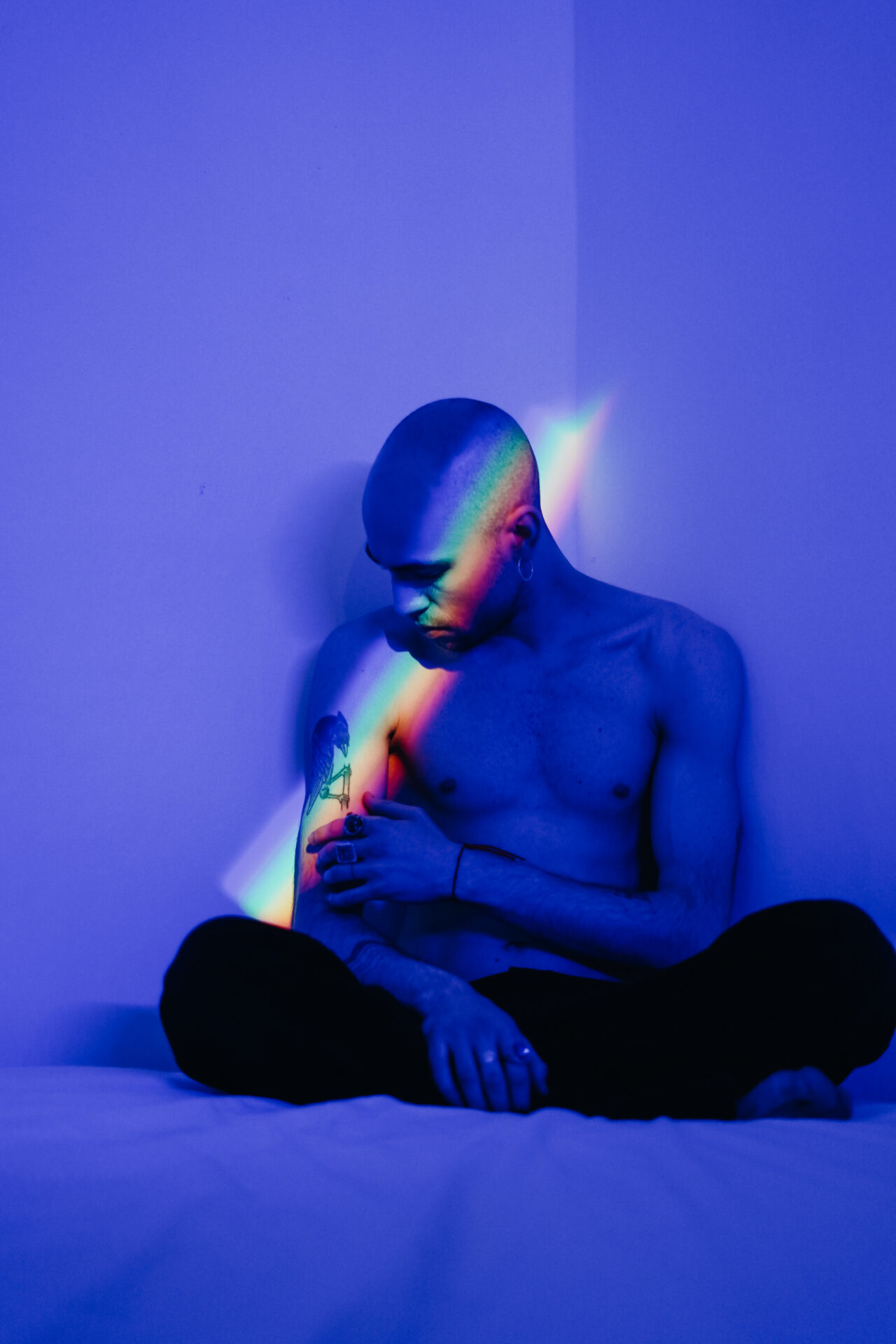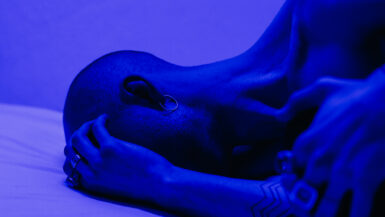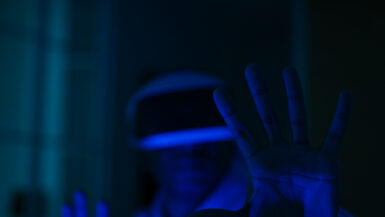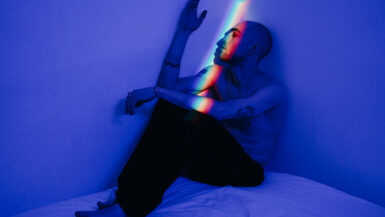In today’s highly competitive sports world, athletes are constantly seeking ways to enhance their performance and gain an edge over their opponents. One critical, yet often overlooked aspect of an athlete’s overall well-being is the quality of their sleep. In this article, we delve into the impact of blue light on sleep quality, specifically in athletes. By exploring the science behind blue light exposure, its effects on our circadian rhythm, and how it influences athletic performance, we aim to provide valuable insights and practical solutions for athletes to optimize their sleep and ultimately, improve their productivity on and off the field.
How Athletes’ Performance is Influenced by Sleep Quality
Sleep quality plays a crucial role in an athlete’s overall performance and well-being. In this section, we will discuss the various ways in which sleep quality can impact athletic performance, as well as offer practical solutions to help athletes optimize their sleep, such as minimizing blue light exposure before bedtime.
The Connection Between Sleep and Recovery
Sleep is a vital time for the body to repair and recover from the physical and mental demands placed on it during training and competition. During deep sleep, the body releases growth hormone, which is essential for repairing and rebuilding muscle tissue, as well as maintaining bone density. Inadequate sleep can lead to decreased muscle mass, increased risk of injury, and a weakened immune system.
Effects of Sleep Deprivation on Cognitive and Motor Performance
Apart from physical recovery, sleep is essential for maintaining cognitive function, which is crucial for athletes’ decision-making and reaction time. Sleep deprivation can lead to impaired cognitive performance, including reduced attention, memory, and processing speed. Additionally, insufficient sleep can negatively impact an athlete’s motor skills, coordination, and reaction time, all of which are vital for optimal athletic performance.
Impact of Sleep Quality on Mood and Motivation
Mood and motivation play a significant role in an athlete’s ability to perform at their best. Poor sleep quality can lead to increased irritability, anxiety, and depression, which can negatively affect an athlete’s motivation and focus during training and competition. Ensuring adequate sleep can help athletes maintain a positive mindset and stay motivated in their pursuit of success.
Blue Light Exposure and Its Effects on Sleep Quality
One of the biggest culprits affecting sleep quality in modern society is blue light exposure, especially from electronic devices. Blue light suppresses the production of melatonin, the hormone responsible for regulating our sleep-wake cycles, leading to disruptions in our circadian rhythm. This can result in difficulty falling asleep, fragmented sleep, and daytime sleepiness, all of which can negatively impact an athlete’s performance. To combat this issue, athletes can incorporate strategies to minimize their blue light exposure before bedtime, as detailed in our article on tips to minimize blue light exposure.
By prioritizing sleep quality and taking proactive steps to reduce blue light exposure, athletes can optimize their physical and mental performance on and off the field. A well-rested athlete is not only more productive in their training but also more resilient in the face of challenges and setbacks, making sleep an essential component of any athlete’s success.
Real-Life Examples of Athletes Prioritizing Sleep Health
In the competitive world of sports, many professional athletes have recognized the importance of sleep health for their performance and overall well-being. They have taken measures to prioritize their sleep, including managing their exposure to blue light, as discussed earlier in this article. This subsection will explore some real-life examples of athletes who have successfully improved their sleep quality, and as a result, their performance on the field.
LeBron James: The King of Sleep
NBA superstar LeBron James is known not only for his exceptional skills on the basketball court but also for his commitment to sleep health. James reportedly sleeps around 12 hours per day, recognizing the essential role of sleep in his physical recovery and mental sharpness. He has also taken steps to minimize his blue light exposure, using blue light blocking glasses and avoiding screens close to bedtime. LeBron’s dedication to sleep health has undoubtedly contributed to his sustained success and longevity in the NBA.
Roger Federer: A Tennis Legend’s Sleep Routine
Tennis icon Roger Federer is another athlete who takes sleep seriously. Federer has been vocal about the importance of sleep in his training routine, stating that he sleeps for 10-12 hours per night, with naps playing a crucial role in his daily schedule. By prioritizing sleep, Federer ensures that he is well-rested and mentally prepared for the intense demands of professional tennis. This commitment to sleep health is likely a contributing factor to his incredible career, which has seen him win 20 Grand Slam titles.
Usain Bolt: The Fastest Man and His Sleep Habits
Eight-time Olympic gold medalist Usain Bolt is yet another athlete who has recognized the significance of sleep for optimal performance. Bolt has been known to prioritize sleep, even taking naps before important races. He has also spoken about the benefits of using a sleep coach to improve his sleep quality and maintain a consistent sleep schedule. Bolt’s commitment to sleep health has undoubtedly played a role in his ability to break world records and maintain his status as the fastest man on Earth.
How Athletes Can Learn from These Examples
These real-life examples demonstrate the importance of sleep health in the world of professional sports. By prioritizing sleep and taking steps to minimize blue light exposure, athletes can optimize their performance and overall well-being. To learn more about how blue light can affect other aspects of cognitive function, such as learning and memory, refer to our article on The Influence of Blue Light on Learning and Memory.
The success of these athletes serves as a powerful reminder that sleep should not be overlooked in the pursuit of athletic excellence. By following in their footsteps and prioritizing sleep health, athletes at all levels can improve their performance and overall quality of life.
The Science Behind Blue Light’s Effects on Sleep
As previously discussed, blue light can have a significant impact on sleep quality, especially in athletes who require optimal sleep for peak performance. In this section, we will dive deeper into the science behind blue light’s effects on sleep, exploring the mechanisms at play and the resulting consequences on an athlete’s sleep patterns and overall well-being.
Understanding the Circadian Rhythm and Melatonin Production
Our body’s internal clock, also known as the circadian rhythm, is a 24-hour cycle that regulates various physiological processes, including sleep-wake patterns. One crucial component of the circadian rhythm is the production of melatonin, a hormone that signals the body when it’s time to sleep. Melatonin production is primarily influenced by light exposure, with levels rising in the evening as natural light diminishes, and decreasing in the morning as sunlight reappears.
Blue Light’s Interference with Melatonin Production
Blue light, which has a wavelength of approximately 480 nanometers, is particularly effective at suppressing melatonin production. This is due to the presence of specialized photoreceptors in our eyes, known as intrinsically photosensitive retinal ganglion cells (ipRGCs). These cells are most sensitive to blue light and play a crucial role in signaling the brain’s suprachiasmatic nucleus (SCN), the “master clock” that governs our circadian rhythm.
When exposed to blue light, ipRGCs send signals to the SCN that it is daytime, resulting in a suppression of melatonin production. In the context of modern technology, this can pose a significant problem for athletes, as the screens of electronic devices such as smartphones, laptops, and televisions emit high levels of blue light. This can disrupt the natural sleep-wake cycle, making it difficult for athletes to fall asleep and achieve restorative sleep.
Consequences of Blue Light-Induced Sleep Disruptions on Athletic Performance
As we have established earlier in this article, poor sleep quality can have a detrimental impact on an athlete’s physical recovery, cognitive function, and emotional well-being. Blue light-induced disruptions in sleep patterns can lead to a decrease in total sleep time, fragmented sleep, and daytime sleepiness, all of which can hinder an athlete’s performance.
For example, insufficient sleep can impair the body’s ability to repair and rebuild muscle tissue, increase the risk of injury, and weaken the immune system. Furthermore, sleep disruptions can lead to diminished cognitive performance, affecting an athlete’s decision-making, reaction time, and motor skills. Finally, sleep disturbances can negatively impact an athlete’s mood and motivation, ultimately compromising their ability to perform at their best.
Addressing the Impact of Blue Light on Athlete’s Sleep Quality
Understanding the science behind blue light’s effects on sleep is critical for athletes who are seeking to optimize their performance and overall well-being. By taking proactive measures to manage blue light exposure, such as using blue light-blocking glasses, implementing screen-free time before bed, and creating a sleep-friendly environment, athletes can mitigate the adverse effects of blue light on their sleep quality and consequently, enhance their performance on and off the field.
The science behind blue light’s effects on sleep highlights the importance of proper sleep hygiene for athletes. By being mindful of their exposure to blue light and prioritizing sleep health, athletes can maximize their potential and achieve their performance goals.
Understanding Blue Light and Its Sources
In order to fully grasp the impact of blue light on sleep quality in athletes, it is essential to first understand what blue light is and the various sources from which it can emanate. This subsection will delve into the nature of blue light and identify its primary sources, enabling athletes to be better informed about the potential sources of blue light exposure and take appropriate steps to mitigate its effects on their sleep quality.
What is Blue Light?
Blue light is a type of high-energy visible (HEV) light that lies within the blue-turquoise range of the visible light spectrum. It has a wavelength of approximately 380 to 500 nanometers, making it one of the shortest and highest-energy wavelengths of visible light. While blue light occurs naturally in sunlight, it is also emitted by artificial sources such as electronic devices and certain types of indoor lighting.
Sunlight: The Natural Source of Blue Light
Sunlight is the primary natural source of blue light, comprising about a third of all visible light. In fact, the blue light present in sunlight is responsible for the sky’s blue appearance. While exposure to sunlight during the day is crucial for maintaining a healthy circadian rhythm, it is important for athletes to be mindful of their exposure to sunlight in the hours leading up to bedtime, as this can potentially disrupt their sleep patterns.
Electronic Devices: The Ubiquitous Artificial Source
In today’s digital age, electronic devices such as smartphones, laptops, tablets, and televisions are a major source of artificial blue light. The screens of these devices emit high levels of blue light, which can be particularly problematic for athletes who use them in the evening or before bedtime. Exposure to blue light from electronic devices can suppress melatonin production and disrupt the natural sleep-wake cycle, negatively impacting sleep quality and athletic performance.
Energy-Efficient Lighting: A Double-Edged Sword
Energy-efficient lighting options, such as compact fluorescent lamps (CFLs) and light-emitting diode (LED) bulbs, have become increasingly popular due to their lower energy consumption and longer lifespan. However, these lighting options also emit higher levels of blue light compared to traditional incandescent bulbs. As a result, athletes should be cautious about their exposure to blue light from indoor lighting, particularly in the hours leading up to bedtime.
Blue Light Filtering Solutions: A Proactive Approach
Given the various sources of blue light exposure, athletes can benefit from adopting proactive solutions to minimize its impact on their sleep quality. Some effective strategies include using blue light filtering screen protectors on electronic devices, wearing blue light blocking glasses, and opting for warm-colored lighting options in the evening. These measures can help athletes reduce their exposure to blue light and promote better sleep quality, ultimately enhancing their performance and overall well-being.
By gaining a clear understanding of blue light and its sources, athletes can take informed steps to manage their exposure and mitigate its impact on their sleep quality. This knowledge, coupled with the implementation of practical solutions, can help athletes optimize their sleep patterns and achieve peak performance in their respective sports.
Strategies to Minimize Blue Light Exposure for Better Rest
Athletes seeking to improve their sleep quality can benefit from implementing strategies to minimize their exposure to blue light, particularly in the evening and before bedtime. This subsection will explore various practical solutions that can help athletes reduce their blue light exposure, promoting better sleep quality and ultimately, enhanced performance on and off the field.
Embrace Blue Light Blocking Glasses
One effective solution to reduce blue light exposure is the use of blue light blocking glasses. These specially designed lenses filter out the blue light emitted from electronic devices and indoor lighting, thereby limiting its impact on melatonin production and sleep quality. Athletes can wear these glasses in the evening, particularly when using electronic devices or working in artificially lit environments.
Create a Screen-Free Bedroom Sanctuary
Establishing a screen-free bedroom environment can significantly reduce blue light exposure and promote better sleep quality. Athletes can commit to keeping electronic devices such as smartphones, laptops, and televisions out of the bedroom, creating a calming and sleep-friendly space. This practice not only minimizes blue light exposure but also helps in reducing mental stimulation and promoting relaxation before bedtime.
Implement a Digital Curfew
Setting a digital curfew is another effective strategy to limit blue light exposure before bedtime. Athletes can establish a designated time in the evening, ideally at least one hour before bedtime, to disconnect from electronic devices. This allows the body and mind to unwind and transition into a state of relaxation, facilitating the onset of sleep and improving sleep quality.
Opt for Warm-Colored Lighting Options
Switching to warm-colored lighting options in the evening can help athletes reduce their exposure to blue light from indoor lighting sources. By replacing energy-efficient CFL and LED bulbs with warmer-colored incandescent bulbs or using dimmable lights in the evening, athletes can create a more sleep-friendly environment that supports their circadian rhythm and promotes restorative sleep.
Make the Most of Natural Light During the Day
Exposure to natural light during the day is essential for maintaining a healthy circadian rhythm and promoting better sleep quality at night. Athletes can make a conscious effort to spend time outdoors in natural sunlight, particularly in the morning and early afternoon. This not only helps regulate melatonin production but also boosts mood and energy levels, further enhancing overall well-being and performance.
By incorporating these practical strategies into their daily routines, athletes can effectively minimize their exposure to blue light and create an environment conducive to restorative sleep. As a result, they can experience improvements in physical recovery, cognitive function, and emotional well-being, ultimately optimizing their performance in their respective sports.





Leave a reply